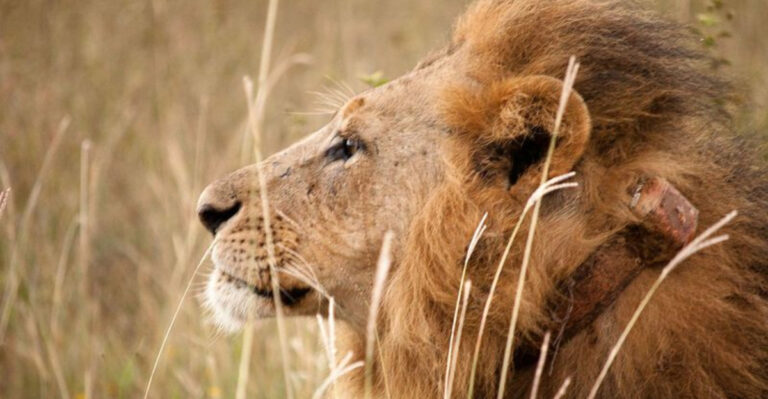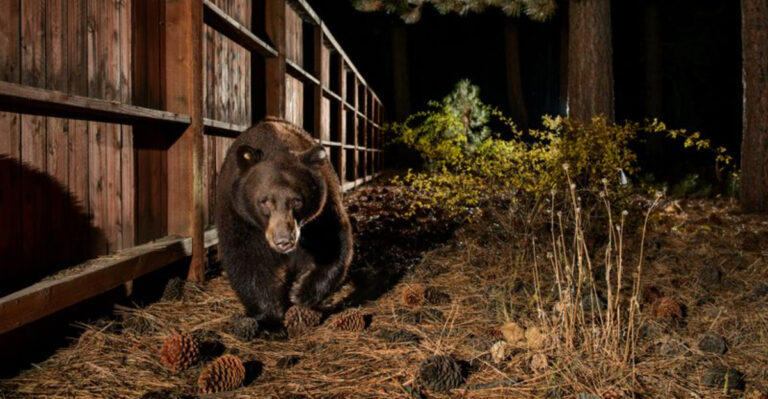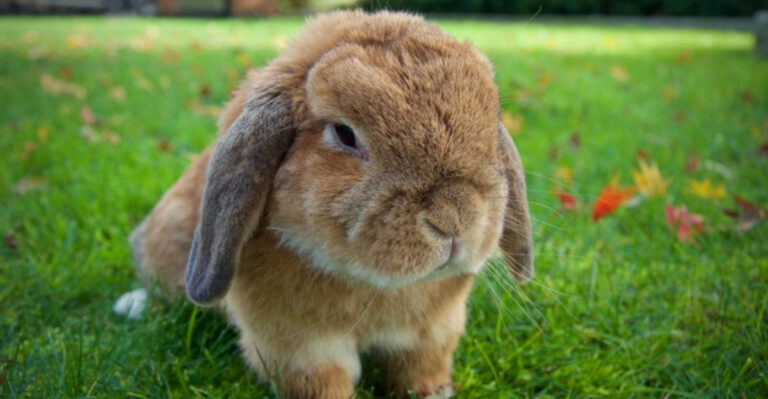The 10 Most Common Birds In The U.S. And 4 Rare Species You Might Never See
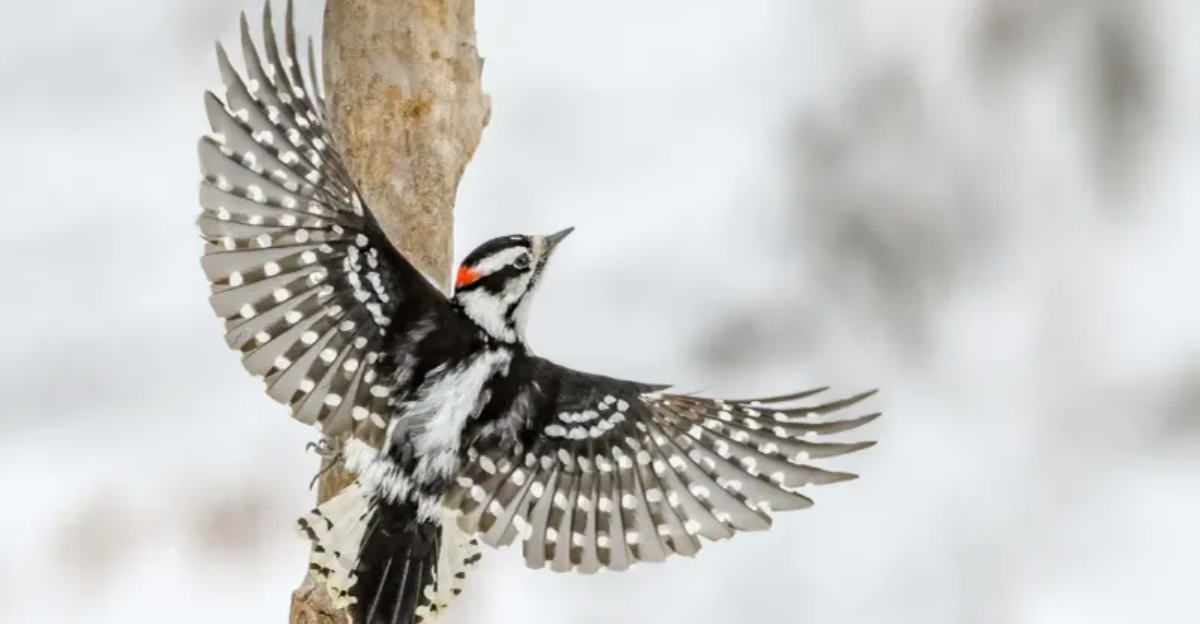
Ever wondered which feathered friends visit your backyard most often? America’s skies and trees are home to hundreds of bird species, from everyday visitors to mysterious rarities.
While some birds are so common you might take them for granted, others are so elusive that even dedicated bird-watchers spend lifetimes hoping for a glimpse. Let’s explore both the familiar faces and the nearly mythical flyers of American skies.
1. American Robin – The Backyard Classic
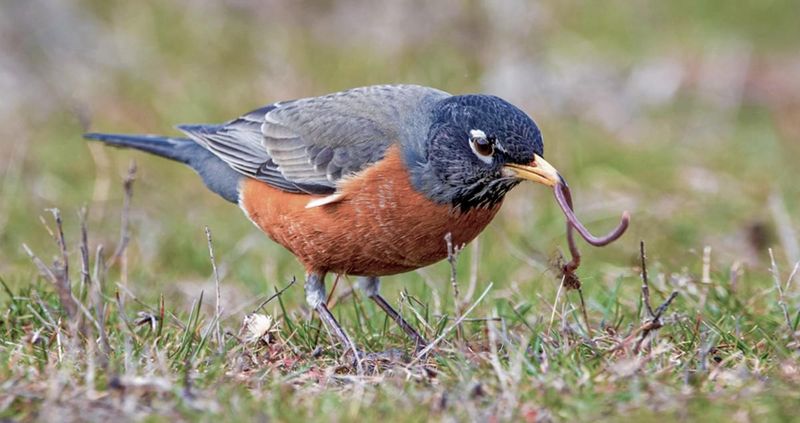
That orange-breasted bird pulling worms from your lawn after rain isn’t just any songbird – it’s America’s beloved robin! These melodious early risers announce spring with their cheerful songs and busy nest-building.
Found in every state except Hawaii, robins have adapted brilliantly to suburban life. Their population numbers around 370 million, making them one of the most abundant birds across the continent.
2. Northern Cardinal – The Red Showstopper
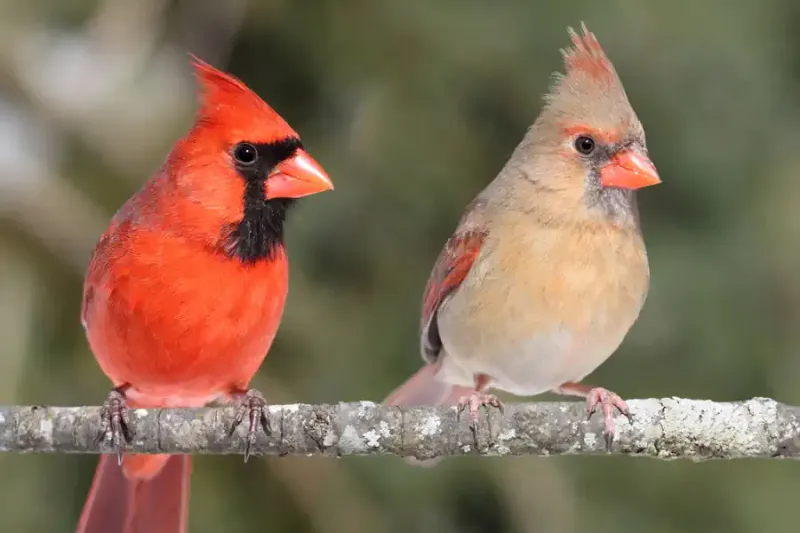
Flash of crimson against winter snow signals the unmistakable male cardinal has arrived! Females sport a more subtle tan-olive coloration with hints of red, but both sexes feature distinctive crested heads and bright orange beaks.
Cardinals don’t migrate, sticking around neighborhoods year-round. Their whistling ‘cheer-cheer-cheer’ calls brighten even the coldest mornings, while their tendency to mate for life has made them symbols of devotion.
3. Mourning Dove – The Gentle Cooing Neighbor
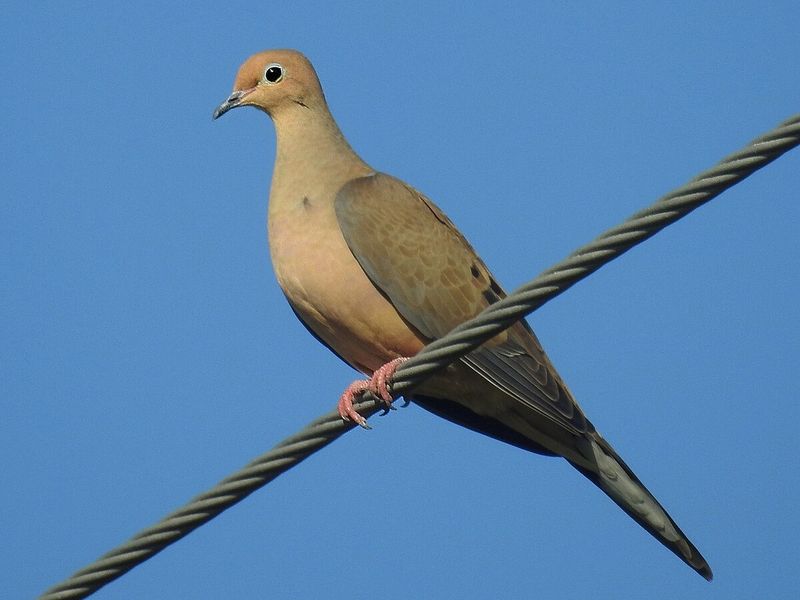
Soft, haunting coos floating through your neighborhood likely come from these plump, tan-colored birds with small heads and long tails. Morning walks often reveal mourning doves waddling along roadsides or perched on telephone wires.
Despite being hunted more than any other game bird in North America, their population remains strong at about 350 million. Their peaceful nature and devoted parenting (both males and females help raise young) make them backyard favorites.
4. Blue Jay – The Noisy Neighborhood Watch
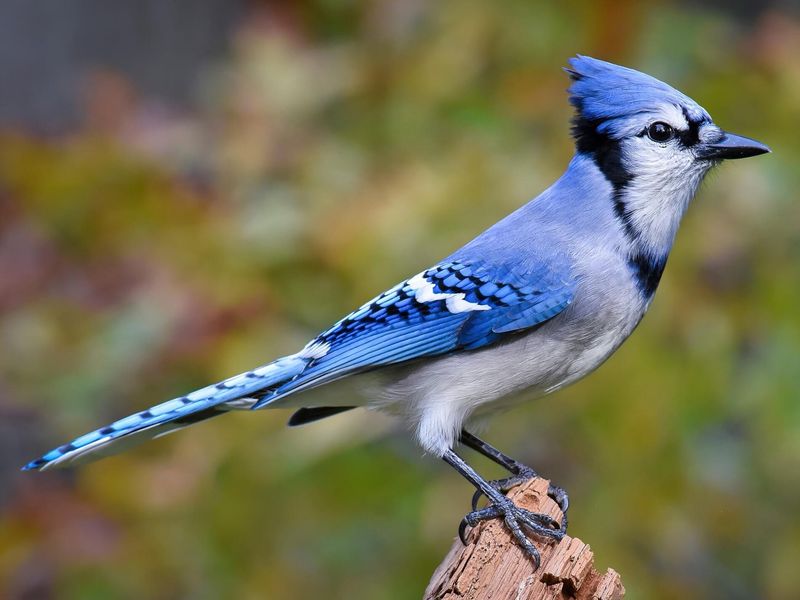
Loud, bold, and impossible to ignore – blue jays bring drama to any bird feeder! Their striking blue-and-white plumage and pointed crest make identification easy, while their raucous calls alert the entire neighborhood to potential dangers.
Natural mimics, these intelligent birds can imitate hawk calls to scare away competitors. Though sometimes bullies at feeders, blue jays serve as woodland protectors, mobbing predators and warning other birds of threats.
5. American Crow – The Clever Opportunist

Far more than just black birds, crows rank among the smartest creatures on Earth! These glossy-feathered problem-solvers can use tools, recognize human faces, and even hold ‘funerals’ for their dead – behaviors once thought unique to primates.
Urban adaptability has helped crows thrive nationwide. They form tight family groups where young from previous years help parents raise new nestlings. Their complex calls and remarkable memory make them both fascinating and sometimes frustrating neighbors.
6. House Sparrow – The Tiny Colonizer
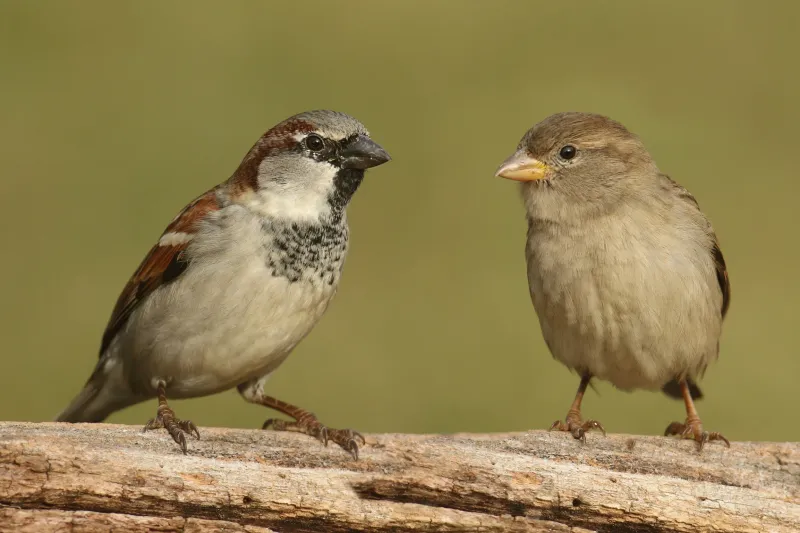
Not actually American natives, these little brown birds arrived from Europe in the 1850s and quickly made themselves at home! Males sport black bibs and gray caps, while females wear simple tan-brown plumage.
Incredibly adaptable, house sparrows thrive in cities and rural areas alike. Their chattering flocks animate urban parks and fast-food parking lots. Though sometimes considered pests for displacing native birds, their success story demonstrates remarkable survival skills in human-altered landscapes.
7. Red-winged Blackbird – The Marsh Musician
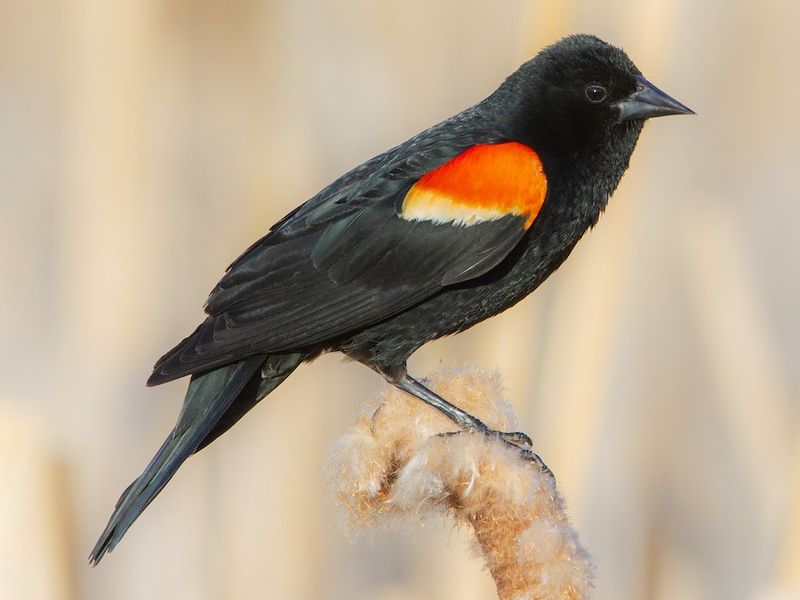
Males flash brilliant scarlet shoulder patches while guarding territory with their distinctive ‘conk-la-ree’ calls – one of the most recognizable sounds of American wetlands. Females, camouflaged in streaky brown, blend perfectly with reeds where they build nests.
These highly polygamous birds create nature’s drama shows each spring as males display vigorously to attract multiple mates. Their massive winter flocks can number in the millions, creating spectacular sunset displays as they return to roosting sites.
8. European Starling – The Murmuration Master
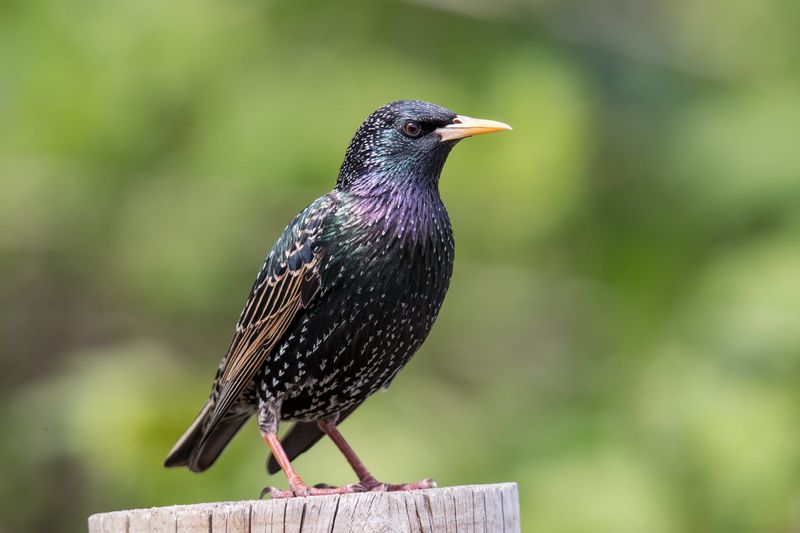
Introduced in 1890 by Shakespeare enthusiasts, these iridescent black birds now number over 200 million across North America! In winter, their speckled plumage and yellow bills transform to glossy black with purple-green sheen for breeding season.
Famous for their mesmerizing aerial ballets called murmurations, thousands of starlings create shifting, flowing shapes across twilight skies. Master mimics, they can copy car alarms, phone rings, and other birds’ songs, incorporating these sounds into their complex vocalizations.
9. American Goldfinch – The Flying Sunbeam
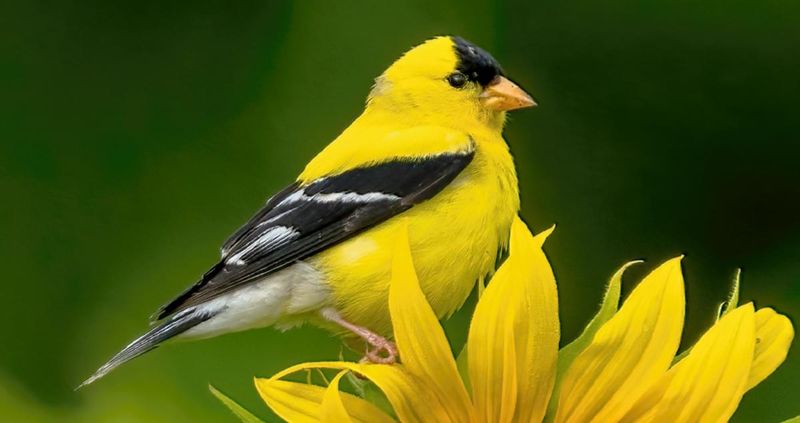
Summer brings brilliant transformation as male goldfinches molt into canary-yellow plumage with black wings and caps – earning them the nickname ‘wild canaries.’ Females and winter males wear more subdued olive-brown colors.
Late nesters, they wait until midsummer when thistle down becomes available for nest-building and feeding young. Their bouncy flight pattern and sweet ‘po-ta-to-chip’ calls announce their presence at feeders. Strictly vegetarian, they particularly love black oil sunflower seeds and nyjer thistle.
10. Downy Woodpecker – The Tiny Drummer
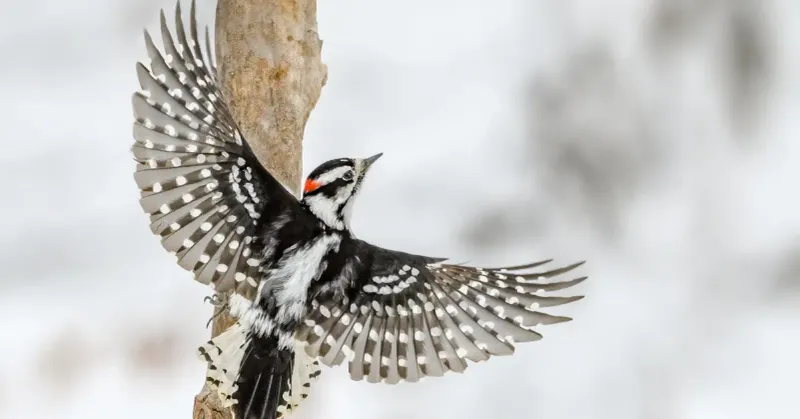
Smallest woodpeckers in North America, these checkered black-and-white birds bring woodland charm to suburban trees. Males sport a small red patch on their heads, while both sexes use their chisel-like bills to excavate insects from bark.
Despite their diminutive size (about sparrow-sized), downies create surprisingly loud drumming sounds during territorial displays. Year-round residents across most states, they readily visit suet feeders and often join mixed-species foraging flocks in winter, bringing life to dormant forests.
11. Kirtland’s Warbler – The Picky Pine Dweller
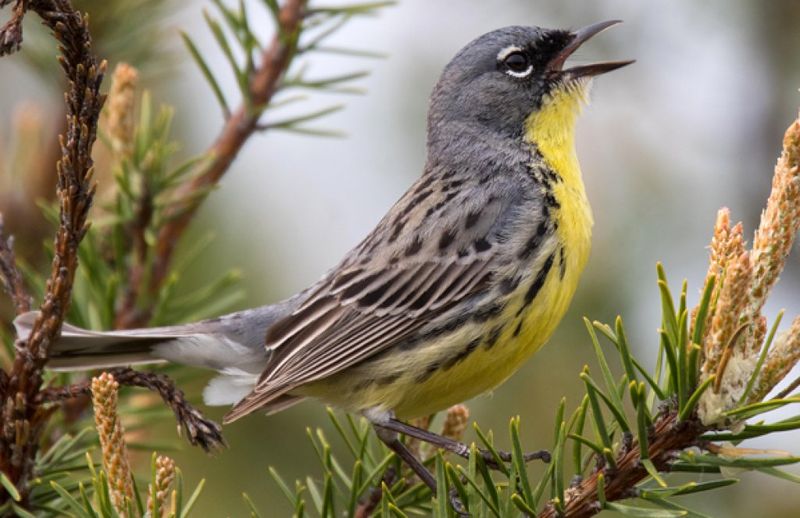
Yellow-bellied with bluish-gray backs, these songbirds nearly vanished forever due to their incredibly specific habitat needs. They nest exclusively under young jack pine trees of precise ages in northern Michigan, Wisconsin, and Ontario.
Conservation success brought them back from just 167 singing males in 1987 to over 2,000 today. Their recovery required carefully controlled forest fires to regenerate jack pine forests and removal of brown-headed cowbirds that parasitize their nests.
12. California Condor – The Prehistoric Survivor
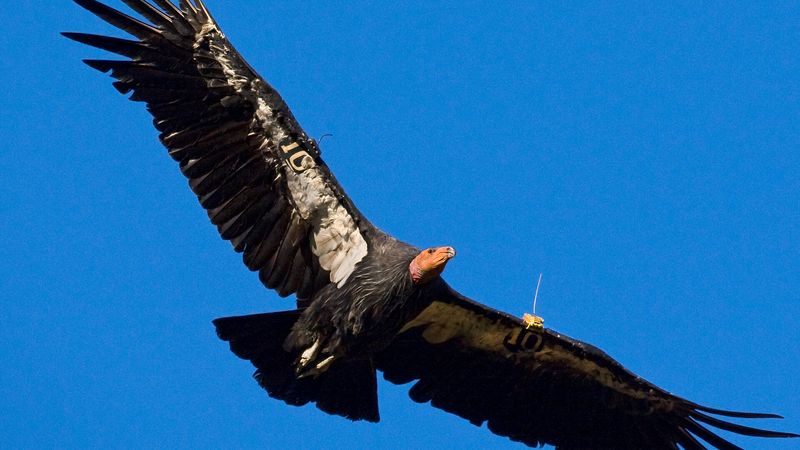
Soaring on massive 9.5-foot wingspans, these ancient-looking birds nearly disappeared completely in the 1980s. With bald, reddish-orange heads and black feathers, they resemble something from dinosaur days – fitting since they’ve existed for over 40,000 years!
Every living condor today descends from just 27 individuals captured for an emergency breeding program. Now numbering around 500 (with half released to the wild), their comeback represents one of conservation’s greatest victories, though lead poisoning from ammunition remains a serious threat.
13. Whooping Crane – The Endangered Giant
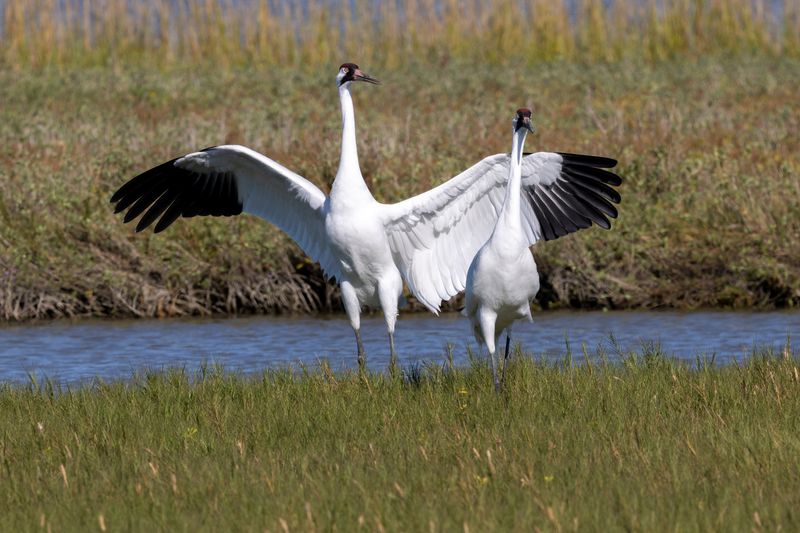
North America’s tallest birds stand nearly 5 feet tall with snowy white plumage, black wingtips, and crimson crown patches. Their bugling calls can carry for miles across the marshes and wetlands they call home.
Once reduced to just 15 birds in 1941, intensive conservation efforts have helped the population grow to around 800 today. Each winter, the last natural flock migrates 2,500 miles from Canada to Texas. Scientists even use ultralight aircraft to teach human-raised cranes their ancestral migration routes.
14. Ivory-billed Woodpecker – The Ghost Bird
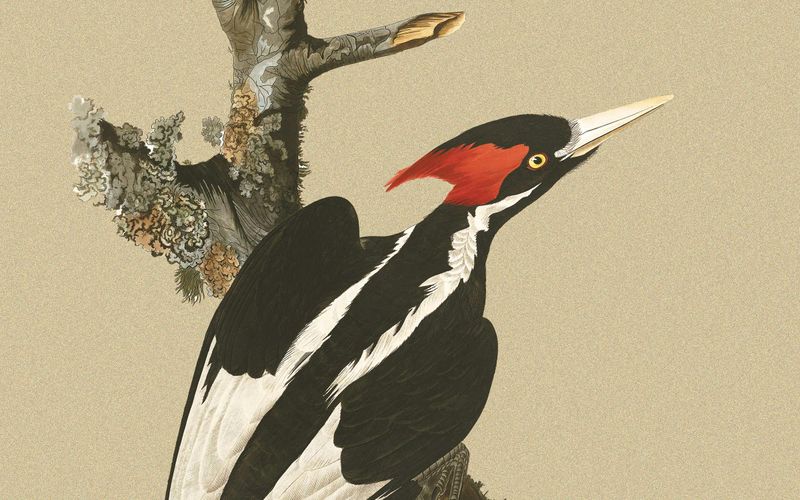
Nicknamed the ‘Lord God Bird’ because that’s what people exclaimed upon seeing one, this magnificent woodpecker may already be extinct. With 20-inch length, striking black-and-white plumage, and ivory-colored bill, it once inhabited old-growth forests across the southeastern United States.
Last confirmed sighting occurred in 1944, though tantalizing reports surface occasionally. Extensive logging of its swamp forest habitat and hunting drove its decline. Whether it still exists remains one of ornithology’s greatest mysteries – a phantom that haunts the dreams of bird-watchers.

